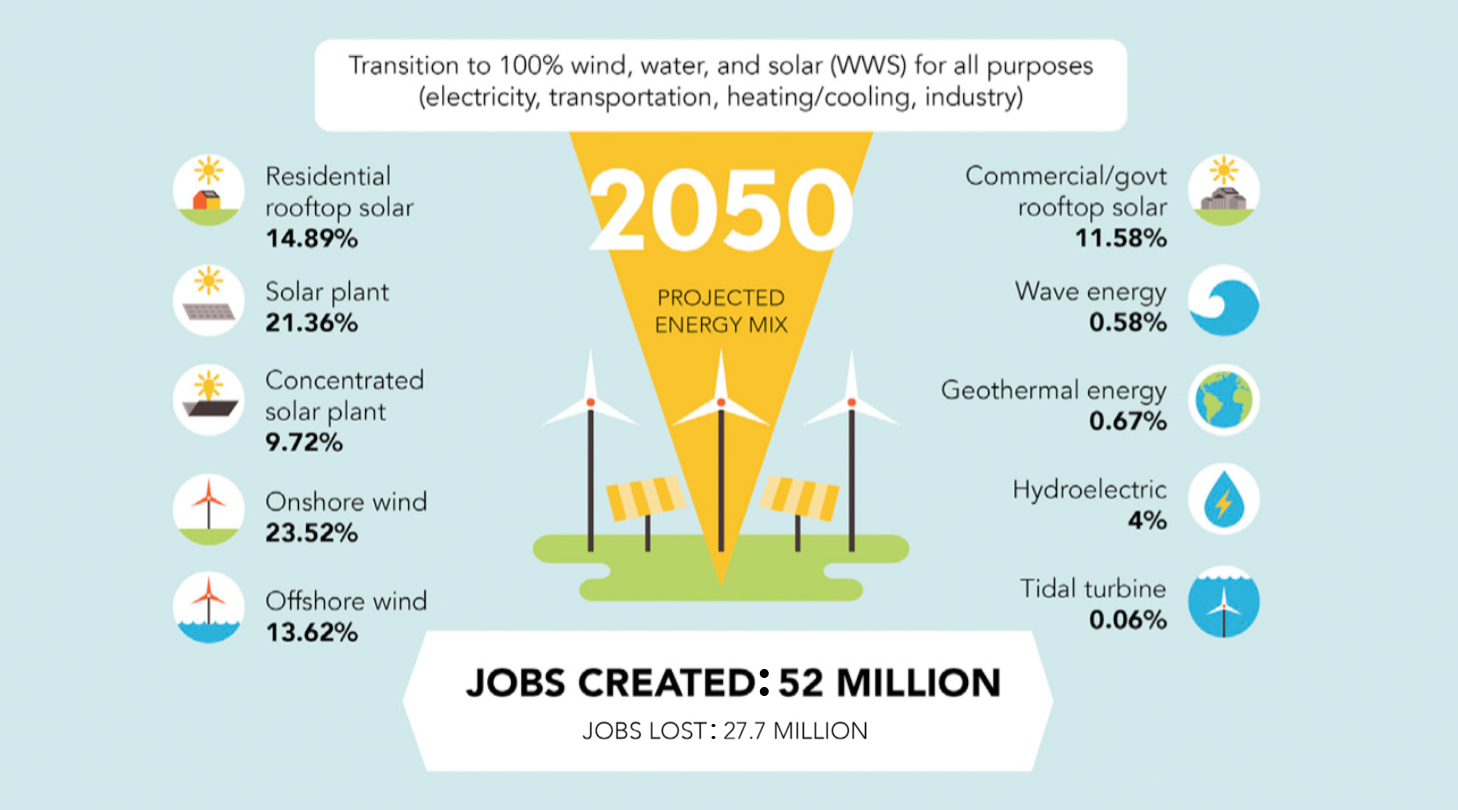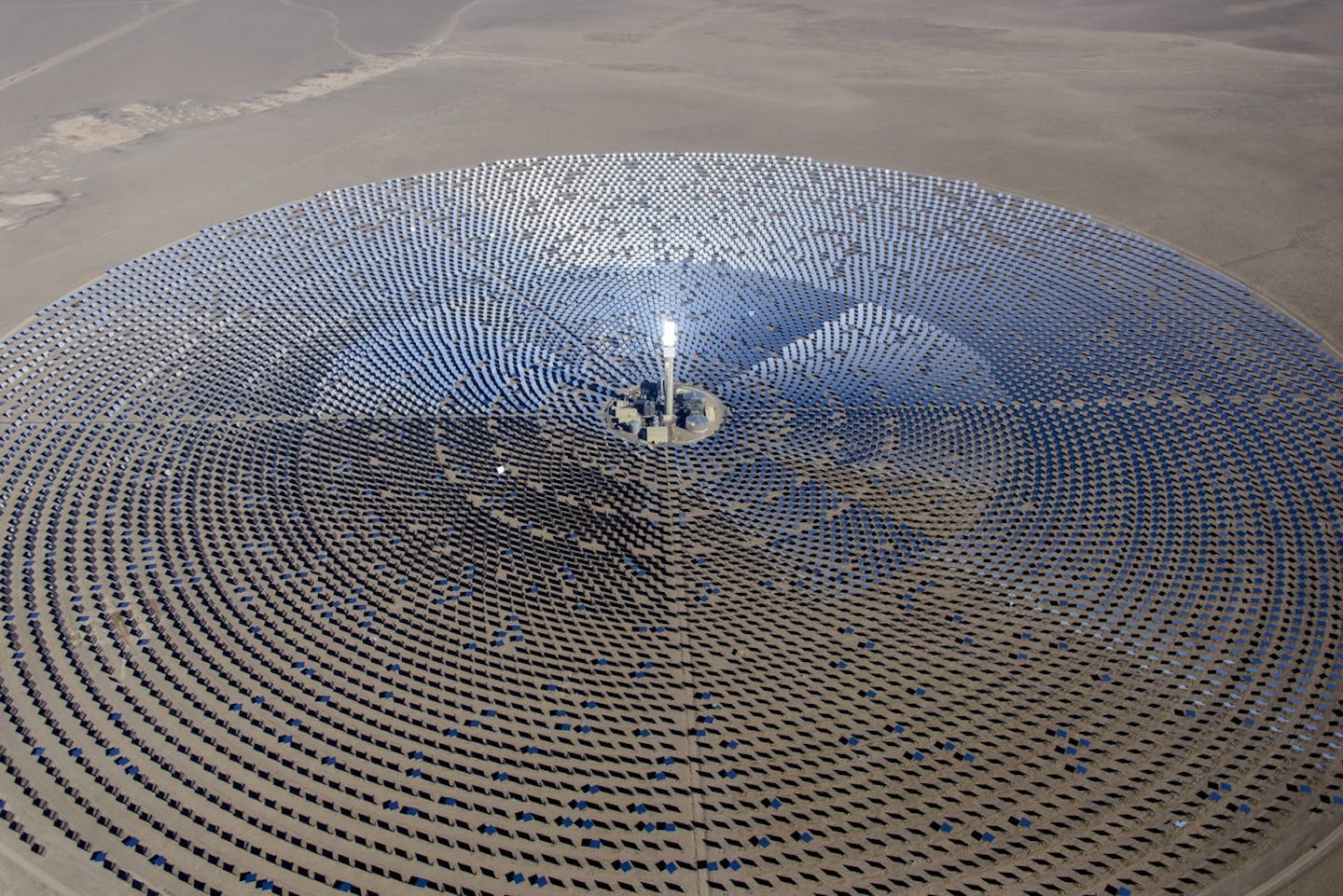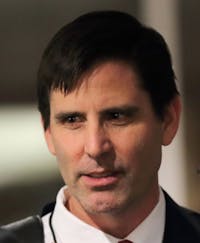The benefits of 139 countries switching to 100% renewable energy by 2050
Stanford University and the University of California at Berkeley have released a new scientific study that produced 100% renewable energy roadmaps for 139 individual countries, representing more than 99% of the world’s greenhouse gas emissions. The study’s 27 co-authors show how available solar, wind, and water resources can be rapidly scaled to create a global energy system that relies entirely on clean, renewable energy for all purposes.
The result of such a transition would have many benefits, including:
(1) preventing 4-7 million deaths and hundreds of millions more illnesses each year due to air pollution;
(2) reducing greenhouse gas emissions to near zero, allowing us to avoid many dangerous climate impacts associated with the continued use of fossil fuels;
(3) creating over 24 million more permanent, full-time jobs including the replacement of all jobs lost in the fossil fuel industry;
(4) stabilizing global energy prices while simultaneously reducing energy costs for consumers;
(5) improving energy access to 4 billion people who would otherwise be experiencing energy poverty;
(6) and reducing the risk of terrorism and catastrophic impacts associated with large, centralized energy plants.
The plans work by electrifying all forms of energy – from electrical power to heating and cooling to transportation -- and feed an expanded electrical grid with clean, renewable wind, water, and solar (WWS) energy while incorporating energy efficiency measures.
One of the paper’s most significant findings is a massive 42.5% reduction in net energy demand by 2050. More than half of this net reduction (23%) comes from the elimination of combustion, which is a hugely inefficient way to create power. Solar panels and wind turbines generate electrons that can be fed directly to the grid. More than one-quarter of the reduction (12.6%) is obtained from eliminating all the energy needed to mine, transport, and process fossil fuels and uranium. The remaining 6.9% is obtained by increasing end-use energy efficiency and reducing energy consumption above the business-as-usual scenarios.

The study uses very ambitious benchmarks of 80% WWS by 2030 and 100% WWS by 2050. This is an “as fast as possible” transition scenario that could keep a pathway open to staying below 1.5 degree Celsius in global temperature rise, an aspirational target established in the Paris climate agreement as the most ambitious goal for avoiding dangerous climate change impacts. Moreover it would eliminate 4-7 million annual deaths associated with the ongoing use of polluting fossil fuels like coal, oil and natural gas.
In this 100% WWS scenario, power generation would include onshore and offshore wind turbines, solar photovoltaics on rooftops and in power plants, concentrated solar power, geothethermal power, tidal and wave power, and existing hydroelectric dams. It would also require greater capabilities to store electricity, heat, cold, and hydrogen storage. Electricity storage is primarily in the form of concentrated solar power with storage, pumped hydroelectric power, batteries, and existing hydroelectric dams. Heat is stored in water, rocks, and cement. Cold is stored in water and ice. Hydrogen is used only for transportation. Grid stability is an important issue. A separate study indicates that by combining the electricity generators, storage options, appliances, and machines listed above, it is possible to keep the electric power grid stable throughout the world at low cost, though some enhancements would be required.
The transition also requires the use of electric appliances, such as heat pumps for building air and water heat, air conditioning, and refrigeration. Other electric appliances for households and businesses include induction cooktop stoves, electric cars, LED lightbulbs, and electric dryers. Electric machines for high-temperature industrial processes include induction furnaces, dielectric heaters, and arc furnaces. Aircraft and ships would be electric and hybrid electric-hydrogen fuel cell.
Implementing the 139 country roadmaps in the time proposed is possible, but only with massive public and private action around the world. Both individuals and policymakers can contribute to the solution. Individuals can transition their own households and lives. Policymakers can help transition through laws and regulations.
While a transition to renewable energy is already underway, it would need to speed up greatly to get on track for 100% WWS by 2050. Progress is being made. Over 35 cities in North America and many more around the world have committed to 100% clean, renewable energy, and over 100 international businesses have now joined. Several U.S. states have recently implemented or proposed laws to get close to 100% in one or more sectors in the next two decades. Many countries have increased their development of WWS and have set goals for high penetrations. While some have criticized this ambitious approach to shifting our energy sector, society as a whole is moving towards a clean energy future.
It is the hope that the renewable energy roadmaps can offer policymakers, businesses, and individuals a way to better understand the enormous benefits of switching to 100% clean, renewable energy as fast as possible.



